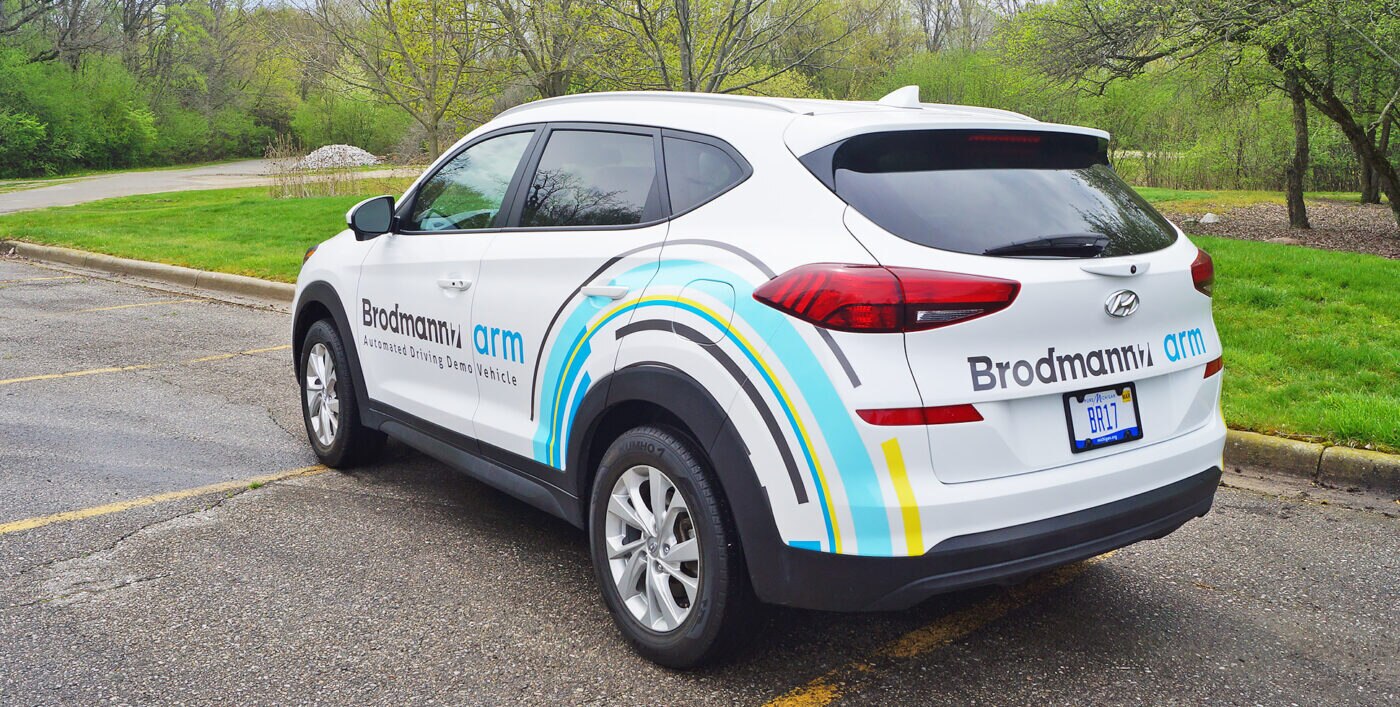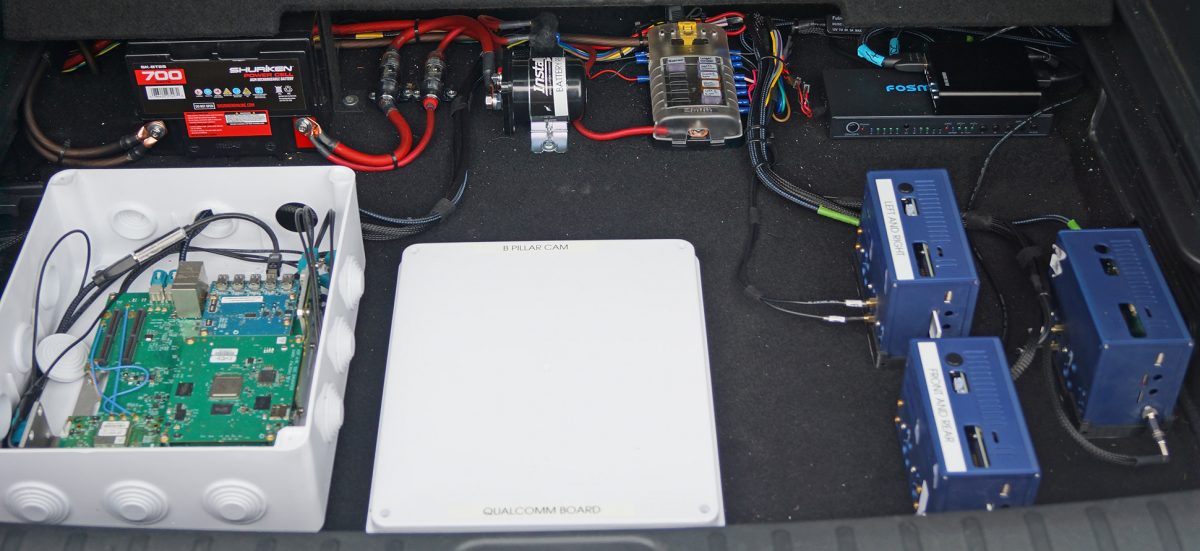Brodmann17 and Arm Partner to Accelerate ADAS

The power of computing has long been a part of our cars. In-car infotainment makes them more entertaining; engine-management systems make them more powerful, efficient and cleaner while antilock braking makes them safer.
Recent advances in processing power and software have led to Advanced Driver Assistance Systems (ADAS) becoming more commonplace, making our cars more comfortable to drive but more importantly safer for everyone: drivers, passengers, other road users and the public in general.
At Brodmann17 we specialize in the ADAS algorithms that process camera data to enable a range of functionalities for the mass market. These algorithms are a vital part of a vehicle’s ability to ‘see’, so it is important that they are deployed on suitably performant, trusted compute hardware.
Arm based system on chips (SoCs) provide the processing power and energy efficiency at the right price point for mass market adoption.
ADAS first became available in high-end luxury cars, with systems such as Adaptive Cruise Control (ACC) enabling the car to control its own speed while maintaining a safe distance from any car in front, and Autonomous Emergency Braking (AEB) enabling the detection of obstacles in the road ahead and applying the brakes without human intervention.
Now, as the technology has advanced, its reach is broadening. As the cost of ADAS has decreased, it’s finding its way into midrange and economy cars, allowing more and more people to enjoy improved safety and drivability. ADAS has also increased in capability – with functionality like lane-changing and traffic jam assistance controlling acceleration, braking and even steering the car in certain circumstances.
ADAS: Exciting for carmakers, enticing for buyers
For car manufacturers, ADAS is an exciting opportunity to offer new features and benefits that make vehicles more compelling to buyers.
However, there are challenges. Designers must deliver these new ADAS systems within important constraints.
- Cost is obviously a factor, especially for ADAS features that are mandated or encouraged by regulators such as Euro NCAP. In Europe, the EU has decreed that all new models of cars, vans, trucks and buses must be fitted with at least fifteen modern safety features from 2022 onwards. For this to happen, hardware and software technologies must be affordable and not make the vehicle uneconomical to manufacture or buy.
- Scalability must encompass all potential special features chosen at time of purchase in order to limit the number of engine control units (ECUs) required for car production.
- Packaging and power efficiency are also important. Space inside the car is at a premium and the compute required must not use a lot of physical space, energy or affect the efficiency of the vehicle. It must not produce a lot of heat thereby requiring more cost and space for cooling. This is even more important with the rise of electric vehicles, where inefficient use of energy directly reduces range.
- Safety is key to ADAS systems, to ensure the well being people inside and outside of the car, and to promote trust in assisted driving technologies.
- Updatability is important to enable performance upgrades and maintentance
Arm has long been a partner in the automotive industry, powering a range of applications across the car from bumper to bumper. The efficient yet highly performant compute provided by Arm-based SoCs is a perfect fit for these new ADAS applications. Different ADAS features will require different levels of processing power, and Arm has a range of SoCs within its automotive ecosystem to address scalable system demands.
These new applications require not just the right type of hardware but also high-performance detection algorithms – and it is for this reason that we’ve partnered with Arm.
Brodmann17’s software offers both best-in-class detection capability with very little energy draw, enabling cost efficient ADAS solutions for the next generation of mass market cars.
Brodmann’s camera-based solutions also scale from simple ADAS systems to advanced Level-3 applications, and our algorithms and software are trained and tested with datasets that cover more than 1 million miles of road and weather conditions.
Demonstration vehicle highlights capabilities of Arm and Brodmann17-based ADAS

To demonstrate the capabilities of Arm and Brodmann17-based ADAS, we have developed a demonstration vehicle, now available for the car makers and suppliers of Detroit to experience in person.
The car integrates four ADAS systems: a front camera system for object and distance detection, automatic speed control and collision warning, a blind spot detection system for cars approaching from the driver and passenger sides of the car, a smart rear camera to identify and alert when pedestrians are detected behind the car, and a smart view monitoring and parking assistance system.
The front forward-facing camera, blind spot detection and smart rear camera systems run on an Ambarella CV2 SoC featuring a quad-core Arm Cortex-A53, a part of Arm’s Safety Ready portfolio, while the surround-view monitoring and park assistance system features an Arm-based Qualcomm SA6155P SoC, also based on Arm Cortex-A53.
Blind Spot Detection employs rear-facing cameras mounted on the outside vehicle mirrors. The Brodmann17 software detects and tracks vehicles from 50 meters, and alerts when a vehicle enters the defined blind spot zone on either side of the car.
Front-facing Vehicle and Pedestrian Detection uses a front-facing camera is mounted inside the vehicle above the rear-view mirror. The Brodmann17 software detects and tracks vehicles and pedestrians in the field of view. The display in the demo vehicle presents each object identified in the bounding box and the distance to the object.
In each case, the system looks for objects in the camera’s field of view, detecting the objects motion and conditions around the car, enabling it to make safe decisions to aid the driver and helping to deal with potential hazards.
Our cars are undergoing a digital evolution, gaining new capabilities, changing how we view our mobility. Wider proliferation of ADAS and increasing levels of automated driving is one of the most transformational trends we are seeing, made possible by the power of computing applied to our cars, making them safer and more comfortable and convenient.
The combination of powerful, energy-efficient, safety-enabled, Arm-based processing and Brodmann17 perception software delivers highly scalable, power-efficient, and economical ADAS solutions that will enable a range of ADAS applications in a wider range of price points and higher volumes than ever before.
If you’re in Detroit, contact us at www.Brodmann17.com to arrange a trip in our new demonstrator and experience this new future for yourself.
Together We are Building the Future of Mobility
The crucial stepping-stones to enhance the automation capabilities of ADAS and IVI technology have arrived with the latest flexible, scalable heterogeneous compute solution from Arm.
Any re-use permitted for informational and non-commercial or personal use only.












